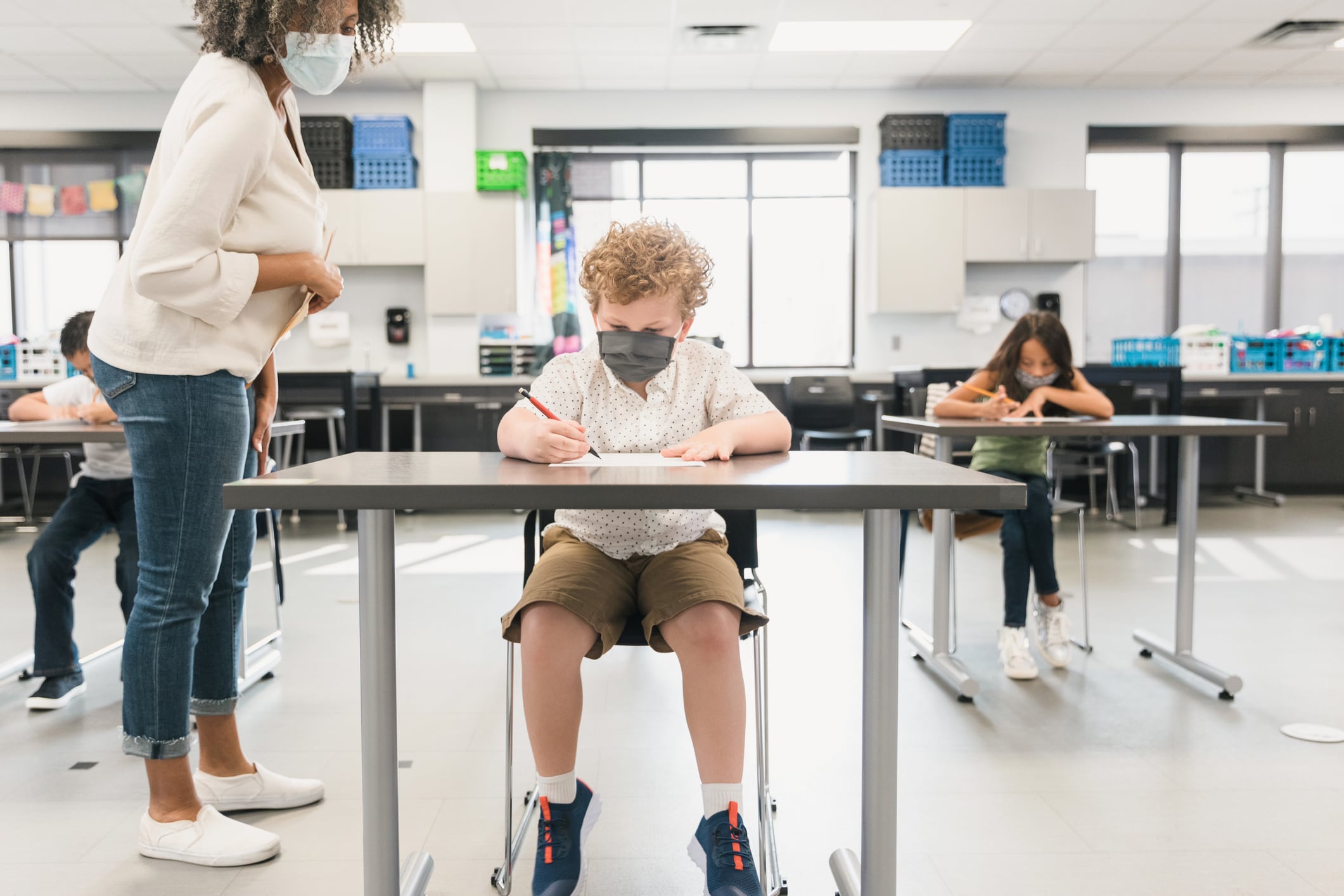Younger learners in Illinois showed major declines in English language arts and math on end-of-the-year exams, revealing the toll the pandemic may have taken on students, according to newly released state data.
Initial data from Illinois Assessment of Readiness and SAT shows the number of students overall meeting the state’s learning standards dropped 17.8% in math and 16.6% in English language arts. Declines were sharpest in third and fourth grades. Third grade scores, for example, fell 8 percentage points in English language arts from 2019 to 2021 and math scores fell 9.6 percentage points. Officials said that translated to 22% fewer third graders meeting grade-level standards in English language arts and nearly 24% fewer third graders meeting those standards in math.
On the SAT, the number of 11th graders reaching proficiency declined 7.7% on the English portion of the test and 14% in math.
When the data was separated by groups — students from low-income families, students with disabilities, and English language learners — the declines were more pronounced. The number of English language learners who met grade level standards fell by half, with younger students being hit the hardest. English language learners currently make up 12.9% of the state’s student population.
Among students with disabilities the percentage of students across all grades who met state standards in English language arts declined by 30%. In math, only 6.5% of students with disabilities met state standards compared with 8.5% two years prior.
The IAR is the annual end-of-year exam that districts administer to test how well third to eighth grade students are doing in math and English language arts. Unlike years prior, the state saw these scores as a way to measure the toll that the pandemic took on students’ learning.
Learning gaps were expected because districts struggled to reopen school buildings and bring students back into classrooms. Even with the data the state has published, it’s unclear whether scores will be enough to measure students’ academic skills because of lower participation rates, drops in enrollment, the change in assessments, and the timing of district exams.
Right now, the state says it believes attendance was a factor for the decrease in learning but can not be sure until it runs more analysis on the data.
“There was a decrease in performance in our early elementary grades overall,” said State Superintendent Carmen Ayala. “Younger students, we know, it was challenging for them to maintain engagement in a remote learning situation. So those are all factors that we do need to take into consideration.”
Even before the pandemic, school district leaders warned that the IAR might not be an accurate measurement of student achievement because the test is administered in the spring and results are given in the fall. By then, schools have passed students to the next grade.
There’s also uncertainty about the makeup of the IAR — and even its future. Currently, the state is changing its assessment approach from an end-of-year exam to an interim exam that will be taken three times throughout the year. That could also result in a change of vendors, which could mean a change in the test.
Last year, the state board of education gave school districts a longer testing window, districts could test students in the spring or fall. About 90% of school districts decided to test in the spring — their final results will be available on Dec. 2. For districts that tested in the fall, results will be available April 27.
Testing experts say that it’s too early to draw conclusions about the latest round of state test scores because of low participation scores. Sean Clayton, the state’s director of assessment, told reporters on Wednesday that school districts did not provide a remote testing option to students — many of whom were learning virtually — and could have affected participation rates.
The state reported that the participation rate in the spring for the SAT was 90% and about 3,000 students took the exam in the last few weeks. For the IAR, there was a 70% participation rate in the spring and the state is still calculating participation rates for the fall.
Nationally, “we’re seeing students of color, students from low income families, English learners, and students with disabilities are the ones that are missing,” said Marianne Perie, founder and president of Measurement in Practice LLC. “So it means we’re looking at a whole different population of kids in 2021 than who took the test in 2019.”
That could, in effect, skew results.
While the state’s data compared the 2018-2019 test results, the state board said that the 2021 exam was not the exact same test.
Perie said that there is a way for states to bridge a previous test to a new test if they use some items from the older test, but in order to make a comparison there would need to be a lot more data.
Even though the IAR and SAT results have shown that students have some declines in learning, Ayala believes the state can catch up by using federal coronavirus funding.
“We have received close to $8 billion in federal pandemic relief funding to address the gaps that resulted from remote learning,” said Ayala. “The federal law requires that 90% of that $8 billion allocation go directly to school districts who will decide locally how to spend these resources to meet their student needs.”
Some districts have already started to invest money into afterschool programs, teacher professional development, and additional staff.
Data about the academic impact of the pandemic is still emerging. So far, what Illinois has reported mirrors initial national data from July. Students of color and students in high-poverty schools were the most likely to have large gaps in learning during the pandemic year. Students of color were the least likely to have an in-person learning option and more likely to opt out of attending on-campus classes.







